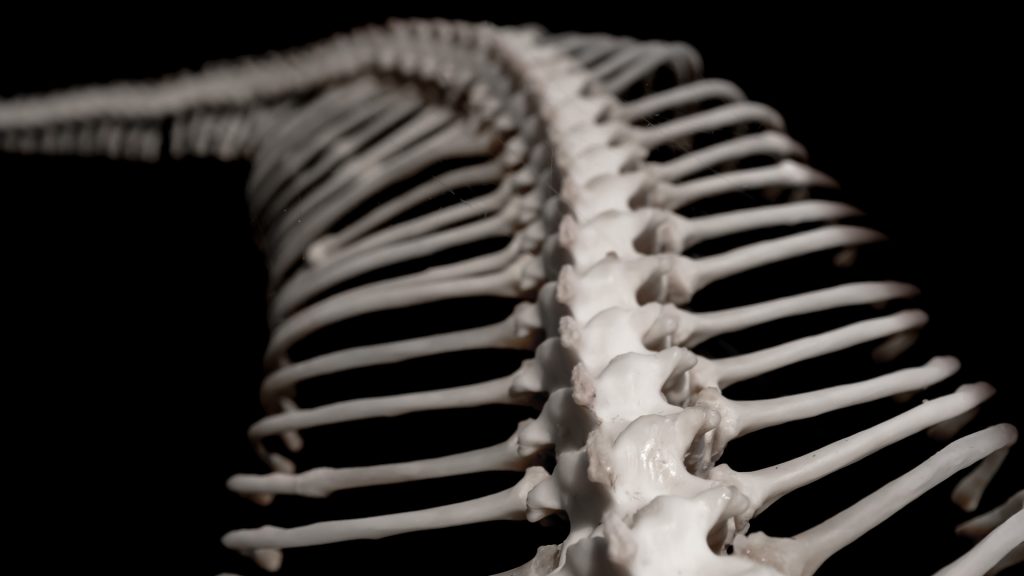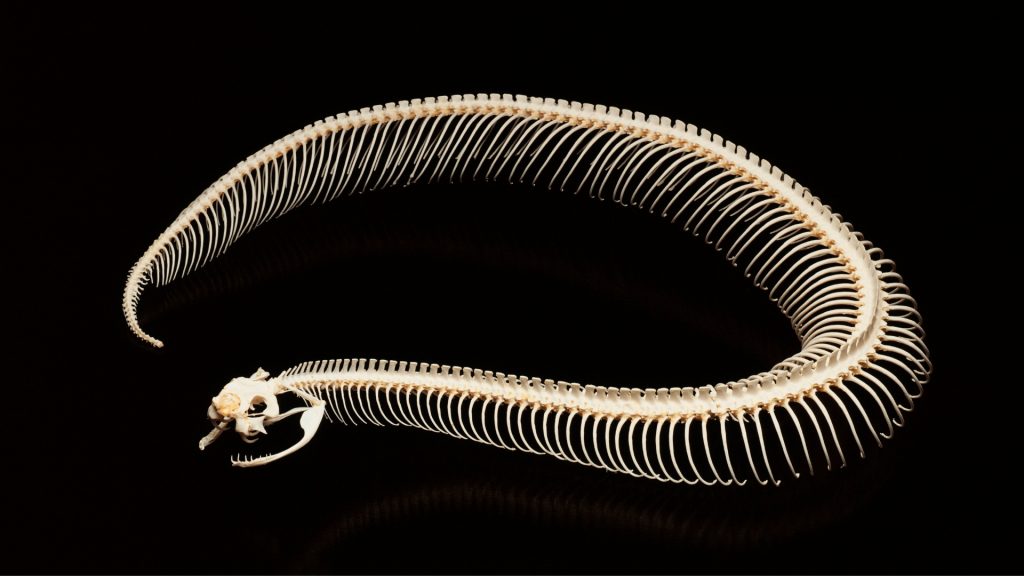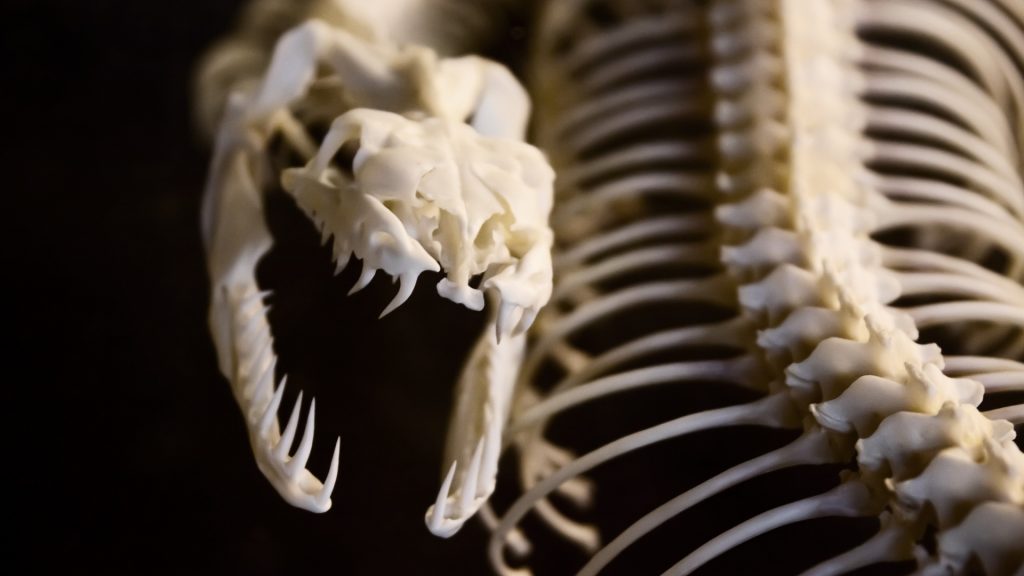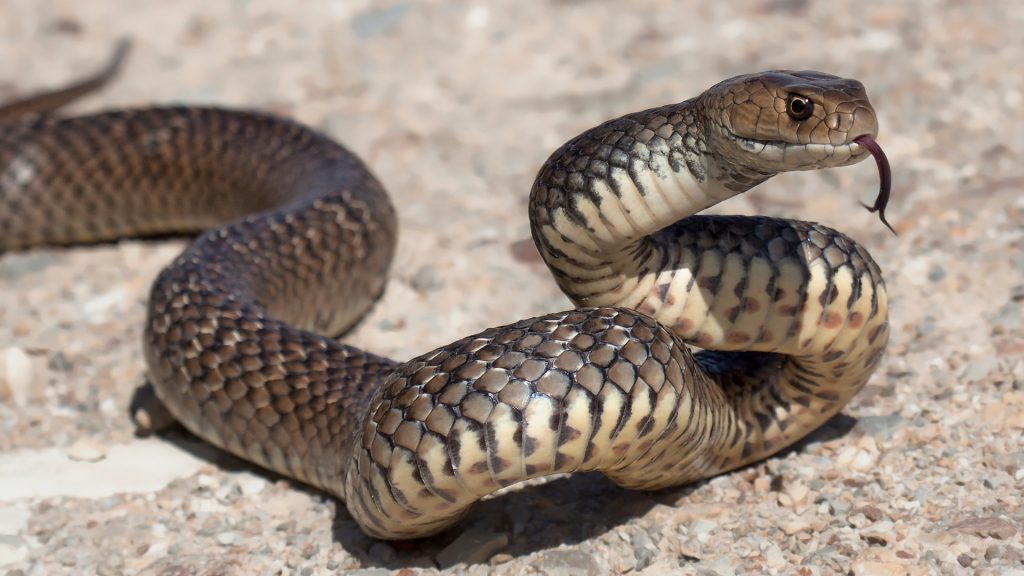Do Snakes Have Bones? | Information and Facts
Snakes are incredibly flexible and known for slithering effectually, so yous might call up that snakes exercise not have bones, but cipher could be further from the truth. In fact, snakes have more than bones than humans.
Do snakes have bones? Snakes have hundreds of basic, as they are vertebrates with skeletons. However, unlike other vertebrates, snakes have a unique skeleton that allows them to thrive with fewer trunk parts. The unique structure of their skeleton is the key gene in the strength, shape, and flexibility of a snake.
Afterward reading this article, y'all will know all virtually serpent bones and skeletons. You volition learn:
- The structure of ophidian skeletons.
- The role of each unique ophidian bone.
- How these bones contribute to their forcefulness and mobility.
Snake Os Structure
Permit's accept a look at the bone structure of snakes, as information technology is fascinating.
What Do Snake Bones Look Like?

While snakes accept many more than basic than humans, they only have a few types of bones as compared with humans. Nearly of the skeleton is made upward of vertebrae and ribs, making for a very basic skeleton.
The skeleton looks like a long string with rib basic attached. The bones themselves look just like bones yous would encounter in any other beast, but snake bones are much smaller and more flexible, only they look very much the same.
Are Snake Bones Strong?
Basic are what give creature bodies their force and construction, and despite existence light and flexible, snake basic are incredibly strong. Some snakes kill their casualty through constriction, significant they utilise their body to squeeze their prey to death.
Even though humans have much larger bones, we are non able to do this with our casualty. Therefore, snakes must have strong bones that connect with even stronger muscles to take downwards and squeeze animals that are many times bigger than themselves.
Are Snake Bones Poisonous?
Snakes are infamous due to the venom that some species contain in their fangs. Does this mean that the bones of a serpent are poisonous likewise? Snake bones are non poisonous, because then many scientists would have to take great care when analyzing them.
Venomous snakes produce venom in oral glands. When snakes need venom to attack casualty or protect themselves from predators, it flows into their hollow fangs. Therefore, this venom is not created nor found in any ophidian bones.
Notwithstanding, this does make the head of a venomous snake incredibly unsafe, even later on death. Some people have been bit by a venomous snake's head hours after it has died and were subsequently poisoned.
How Many Bones Does a Serpent Have?
Despite beingness so small and having such a simple trunk structure, snakes have hundreds of bones in their bodies, and tin have anywhere from 200-400 vertebrae that make up the spine. Each vertebra is attached to a rib, meaning in that location are just as many rib bones as vertebrae.
The exact number of bones in a snake depends on the species. Notwithstanding, even the lower finish of the bone count spectrum is well into the hundreds. In dissimilarity, humans only have 206 bones.
Exercise All Snakes Have Basic?
All snakes are vertebrates, meaning they have an interior skeleton with a backbone, so there are no snakes without bones. Bones are the reason why snakes tin slither, motility around, and assail prey, so they would not exist able to eat, move, or function at all without their basic.
Do Snakes Accept Skeletons?

Like other vertebrates (such every bit humans, birds, dogs, or other animals), snakes have an internal skeleton with a backbone. But unlike other vertebrates, snake skeletons are adequately simple.
Serpent skeletons are composed of a skull, a spine that spans well-nigh of the serpent'southward length, and a tail. The spine is continued past hundreds of interlocking vertebrae, which give the snake incredible flexibility. They also have hundreds of rib basic to protect their organs throughout their long body.
The snakehead skeleton consists of the attic, which houses the brain, an upper jaw, and a lower jaw. Though a snake does non have ears in the aforementioned sense as humans exercise, the skull does comprise ear basic, which are used to sense vibrations in the surroundings around the snake. These vibrations cause the ear bones to vibrate, which sends a point to the brain that is interpreted equally sound.
Do Snakes Accept Vertebrae?
Every bit with many animals, snake spines are composed of small interlocking bones called vertebrae. All vertebrates have vertebrae, which is why they are named vertebrates.
While humans have 33 vertebrae, snakes have anywhere from 200 to 400, depending on the species. Having and so many vertebrae is why snakes are incredibly flexible and tin can ringlet up in assurance, tie into knots, and twist and turn in means that are impossible for humans. If snakes had as many vertebrae as humans, their bodies would not be virtually every bit flexible, and they would be completely different animals.
These vertebrae start at the snake's skull and connect all the way to the end of his body.
Do Snakes Have Spines?
Since snakes have vertebrae, that means they have a spine, which comprises hundreds of vertebrae that take upwards most of the length of the snake'south trunk. Each vertebra of the spine is connected to a rib.
This design of the snake'southward spine helps information technology to slither and motion with an odd flexibility. If the ophidian'south spine were every bit rigid as a human'due south spine, then the snake would not accept been able to survive in the aforementioned way. It would probably withal be a lizard-like fauna with legs instead of a unique limbless animal that slithers in all sorts of ways.
Do Snakes Take Jaw Bones?

Snakes have jaw bones that are quite unique in the animate being kingdom. The skulls of well-nigh animals consist of the cranium (which holds the encephalon), the maxilla (the upper jaw), and the mandible (the lower jaw). For near animals, the maxilla is fused to the cranium.
However, things are different for snakes. The upper and lower jaws of snakes are each split up into two (a left side and a right side) and are held together by flexible ligaments, which results in an extremely flexible jaw that tin can open up broad plenty to swallow casualty multiple times bigger than themselves.
Do Snakes Have Leg Bones?
Snakes are unique because they do not have whatever appendages in their skeletons, which means that they do not have any leg or arm bones.
However, some snake skeletons accept vestigial leg bones. A vestigial structure is a structure (such as a os, tissue, or organ) that does not office, in the same way, as its ancestral form functions. Though snakes do not have total-grown legs, they take small basic that show evidence that their evolutionary ancestors had legs.
This finding has led scientists to believe that snakes descended from lizards. Though these "leg basic" do exist in snakes, that doesn't hateful that snakes will start walking anytime presently.
Snakes evolved to slither around on their bodies because it was an evolutionary advantage. The vestigial remnants of their legs but serve as a small pic of what snakes used to be, not what they volition be in the future.
How To Tell If Your Snake Has Broken Basic?
Because snakes have such a unique skeleton, they do not exhibit the same symptoms humans do when they break a os. However, there are a few signs that you can keep an eye out for.
The showtime sign that something is incorrect with your serpent is if its body has any bulges, jagged edges, or is not its usual shape or bend. If your ophidian has broken i of its bones, the area may bang-up and look a flake jagged.
Another common sign that your snake has cleaved a bone is that he will become uncharacteristically aggressive if anyone goes near a specific section of his body, which is a sign that your ophidian is in pain and doesn't want that area touched.
Your snake may also exhibit express movement. If your snake moves weirdly or in a express way, he may have a bone suspension or fracture.
How Do Snakes Move?

The muscles that are fastened to the ribs are responsible for giving a ophidian its momentum. Withal, snakes use friction from their scales and their weight distribution to aid them steer and move through their environment. So while their muscles provide the speed, their scales and weight help them with their direction.
How Fast Can a Snake Move?
Snakes move at all sorts of speeds depending on their size and species. Some snakes hardly move at all, letting their prey come to them instead. Most common snakes move around six mph, but the Sidewinder, which is the fastest snake in the earth, can motility at eighteen mph. For context, the average human merely runs about half-dozen to x mph, although the fast homo in the world tin can run 28 mph.
Summary
Snakes are vertebrates equanimous of hundreds of bones. Their spines, which consist of hundreds of vertebrae, are the reason why snakes are so flexible and strong. Snake skeletons are unique, with flexible jaws, long bodies, and no appendages, making them a fascinating group of species that stand out in the beast kingdom.
List of Sources
Op Den Brouw, B. (2020). Sneaky Snake Facts. The University of Melbourne.
Ryan, J. (2007). Skulls and Basic: Comparing Form and Function of Vertebrate Skeletal Systems.
Knight, J. Coping With Snakes in Montana. Montana State University.
Smithsonian Channel. (2015). The Sidewinder Serpent Slithers at eighteen MPH.
NYU. (2009). Snakes Apply Friction and Redistribution of Their Weight to Slither on Flat Terrain.
hutchinsbefornes79.blogspot.com
Source: https://pestsamurai.com/do-snakes-have-bones/
0 Response to "Do Snakes Have Bones? | Information and Facts"
Post a Comment